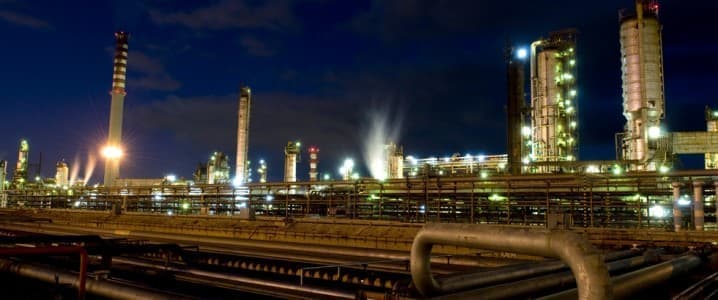Business
Kazakhstan Targets $20 Billion Refining Expansion to Boost Fuel Exports

Kazakhstan has announced a comprehensive energy strategy aiming to triple its fuel exports by 2040. Under this plan, refined fuel volumes are projected to reach 39 million tons annually, a significant increase from the current 17 million tons. The share of exports will rise to 30% of total production, a marked shift from the previous framework that limited fuel exports to just 10% by 2024.
The recently approved strategy, which covers the period from 2025 to 2040, places a strong emphasis on downstream development. Key components of the plan include enhancing refining capacity and initiating a $5 billion investment in petrochemical projects. The government aims to target emerging markets, particularly in China, India, and neighboring countries, to meet growing global energy demands.
Kazakhstan’s Energy Ministry has confirmed six ongoing projects within the oil and gas chemical sector, amounting to an additional $15 billion in investments. These projects are integral to the broader vision of developing Kazakhstan as a strategic refining hub in Eurasia. The focus on expanding refining infrastructure is expected to support the country’s goals of increasing refining depth to 94% and ensuring complete domestic coverage of fuel needs.
Strategic Investments and Future Goals
The new energy strategy is designed to address the anticipated annual growth in fuel demand of 1.5-2%, driven by urbanization and industrialization trends. The government recognizes the importance of boosting exports to regions experiencing significant demand shifts, particularly in Asia.
The Times of Central Asia reported that Kazakhstan plans to invest up to $5 billion in its oil and gas chemical sector, specifically targeting high-value products such as polymers and fertilizers. The government sees these investments as key to diversifying its economy and insulating it from fluctuations in global commodity prices.
Implementation of the strategy is set to begin in 2025, starting with pilot projects aimed at digitizing refinery operations. This modernization effort is part of Kazakhstan’s broader ambition to attract long-term foreign investment and strengthen its position in the energy market.
The Energy Ministry has emphasized that with an estimated 30 billion barrels of proven oil reserves, Kazakhstan is poised to become a major player in the global refining landscape. This initiative not only aims to enhance the country’s economic resilience but also seeks to capitalize on the increasing global demand for refined petroleum products.
-

 World5 months ago
World5 months agoSBI Announces QIP Floor Price at ₹811.05 Per Share
-

 Lifestyle5 months ago
Lifestyle5 months agoCept Unveils ₹3.1 Crore Urban Mobility Plan for Sustainable Growth
-

 Science4 months ago
Science4 months agoNew Blood Group Discovered in South Indian Woman at Rotary Centre
-

 World5 months ago
World5 months agoTorrential Rains Cause Flash Flooding in New York and New Jersey
-

 Top Stories5 months ago
Top Stories5 months agoKonkani Cultural Organisation to Host Pearl Jubilee in Abu Dhabi
-

 Sports4 months ago
Sports4 months agoBroad Advocates for Bowling Change Ahead of Final Test Against India
-

 Science5 months ago
Science5 months agoNothing Headphone 1 Review: A Bold Contender in Audio Design
-

 Top Stories5 months ago
Top Stories5 months agoAir India Crash Investigation Highlights Boeing Fuel Switch Concerns
-

 Business5 months ago
Business5 months agoIndian Stock Market Rebounds: Sensex and Nifty Rise After Four-Day Decline
-

 Sports4 months ago
Sports4 months agoCristian Totti Retires at 19: Pressure of Fame Takes Toll
-

 Politics5 months ago
Politics5 months agoAbandoned Doberman Finds New Home After Journey to Prague
-

 Top Stories5 months ago
Top Stories5 months agoPatna Bank Manager Abhishek Varun Found Dead in Well









